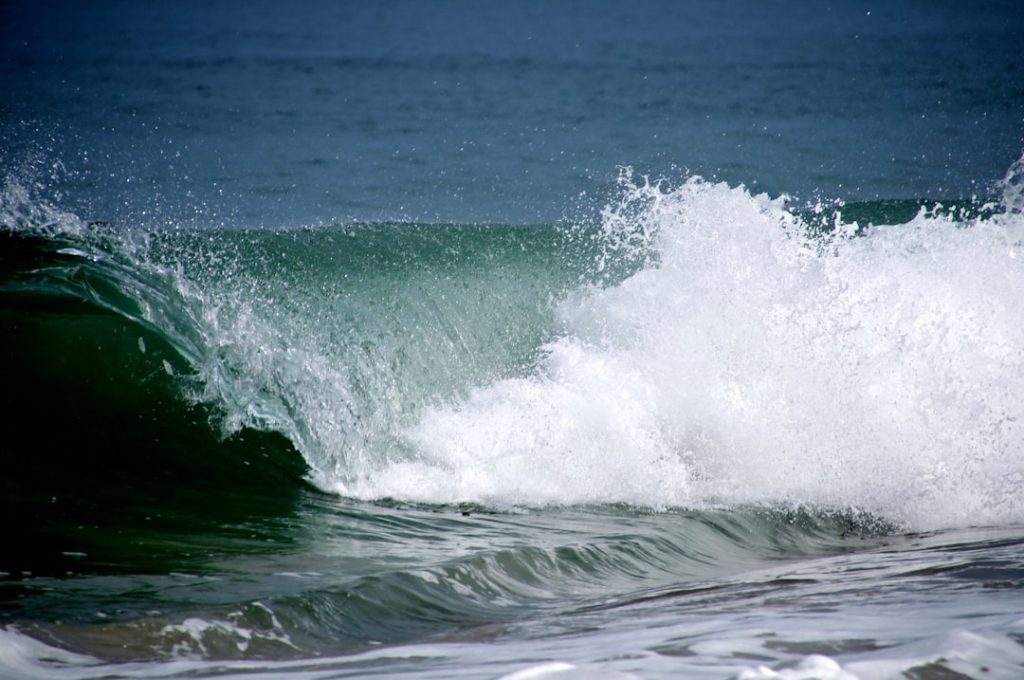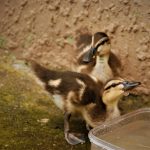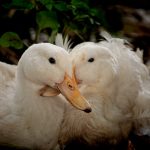Mallard ducks, scientifically known as Anas platyrhynchos, are one of the most common and widespread duck species in the world. They are known for their beautiful iridescent green heads, white neck ring, and chestnut-brown chest. Mallards are highly adaptable and can be found in a variety of habitats, including wetlands, marshes, lakes, rivers, and even urban areas. Breeding season for mallard ducks typically occurs in the spring and summer months, with courtship and pair bonding behaviors being an integral part of their breeding process.
During the breeding season, male mallards will engage in elaborate courtship displays to attract a mate. These displays often involve the male duck flapping its wings, bobbing its head, and emitting a series of low, raspy calls. Once a female is attracted to a male’s display, the pair will engage in pair bonding behaviors, which involve the male and female forming a strong bond through mutual preening and close proximity to one another. Mallard ducks are monogamous during the breeding season, with pairs forming strong bonds that can last throughout the breeding season and sometimes even beyond.
Table of Contents
- 1 Courtship and Pair Bonding
- 2 Nesting and Egg Laying
- 3 Incubation and Brood Rearing
- 4 Challenges and Threats to Mallard Duck Breeding
- 5 Conservation Efforts and Protection of Mallard Duck Breeding Habitats
- 6 Conclusion and Future Research on Mallard Duck Breeding Behavior
- 7 FAQs
- 7.1 What is mallard duck breeding behavior?
- 7.2 When do mallard ducks breed?
- 7.3 How do mallard ducks attract mates?
- 7.4 Where do mallard ducks build their nests?
- 7.5 How many eggs do mallard ducks lay?
- 7.6 How long do mallard ducks incubate their eggs?
- 7.7 What happens after mallard duck eggs hatch?
Key Takeaways
- Mallard ducks exhibit complex breeding behavior involving courtship, pair bonding, nesting, and brood rearing.
- Courtship and pair bonding in mallard ducks involve displays, vocalizations, and physical interactions to establish and maintain a bond between mates.
- Nesting and egg laying occur in secluded areas near water, where the female builds a nest and lays a clutch of eggs.
- Incubation of the eggs is primarily done by the female, and both parents participate in brood rearing and protecting the ducklings.
- Mallard duck breeding faces challenges and threats such as habitat loss, predation, and human disturbance, which can impact their breeding success.
- Conservation efforts focus on protecting and restoring mallard duck breeding habitats, as well as managing threats to ensure the long-term survival of the species.
- Future research on mallard duck breeding behavior aims to further understand their reproductive ecology and develop effective conservation strategies.
Courtship and Pair Bonding
Courtship and pair bonding behaviors are crucial aspects of mallard duck breeding behavior. The courtship displays of male mallards are not only visually stunning but also serve as a way for males to attract females and establish their dominance. These displays often involve the male duck flapping its wings, bobbing its head, and emitting a series of low, raspy calls. These displays can be quite elaborate and can vary in intensity depending on the competition for mates within a particular area.
Once a female is attracted to a male’s display, the pair will engage in pair bonding behaviors. This involves the male and female forming a strong bond through mutual preening and close proximity to one another. Pair bonding is essential for successful breeding, as it ensures that both the male and female are committed to each other throughout the breeding season. Mallard ducks are monogamous during the breeding season, with pairs forming strong bonds that can last throughout the breeding season and sometimes even beyond. This strong bond is crucial for successful nesting and raising of offspring.
Nesting and Egg Laying
After courtship and pair bonding, female mallard ducks will begin to search for suitable nesting sites. Mallards typically nest on the ground in concealed locations near water, such as in tall grass, reeds, or shrubs. The female will construct a nest using nearby vegetation and line it with down feathers to provide insulation for the eggs. Once the nest is complete, the female will lay a clutch of eggs, typically ranging from 8 to 13 eggs, with one egg being laid each day until the clutch is complete.
Mallard duck eggs are a pale green or off-white color and are oval-shaped. The female will continue to lay eggs until she has completed her clutch, at which point she will begin incubating the eggs. The incubation period for mallard duck eggs is approximately 26-30 days, during which time the female will diligently tend to the eggs, keeping them warm and protected from predators. Once the eggs hatch, the female will lead her ducklings to water, where they will begin their journey to independence.
Incubation and Brood Rearing
After laying her clutch of eggs, the female mallard will begin the incubation process. She will diligently tend to the eggs, keeping them warm and protected from predators. The incubation period for mallard duck eggs is approximately 26-30 days, during which time the female will rarely leave the nest, only doing so briefly to feed and stretch her wings.
Once the eggs hatch, the female will lead her ducklings to water, where they will begin their journey to independence. Mallard ducklings are precocial, meaning they are born with their eyes open and are able to leave the nest shortly after hatching. The female will continue to care for her brood, teaching them how to forage for food and providing protection from predators. Mallard ducklings grow rapidly and are able to fly at around 2 months of age, at which point they will become independent from their mother.
Challenges and Threats to Mallard Duck Breeding
Mallard ducks face a number of challenges and threats to their breeding success. Habitat loss and degradation due to human development have resulted in a decline in suitable nesting sites for mallards. Wetland drainage, urbanization, and agricultural expansion have all contributed to the loss of critical breeding habitats for mallard ducks.
Predation is another significant threat to mallard duck breeding success. Nest predation by mammals such as raccoons, foxes, and skunks can significantly impact nesting success rates. Additionally, predation on ducklings by birds of prey, such as hawks and owls, can also pose a threat to mallard populations.
Conservation Efforts and Protection of Mallard Duck Breeding Habitats

Conservation efforts aimed at protecting mallard duck breeding habitats are crucial for ensuring the long-term survival of this iconic species. Wetland restoration projects can help to create new nesting sites for mallards and provide essential habitat for breeding pairs. Additionally, efforts to conserve and protect existing wetlands and marshes are essential for maintaining healthy mallard populations.
Predator management programs can also help to mitigate the impacts of predation on mallard nesting success. By implementing measures to control nest predators and protect nesting sites, conservationists can help to improve breeding success rates for mallard ducks.
Conclusion and Future Research on Mallard Duck Breeding Behavior
In conclusion, mallard duck breeding behavior is a fascinating and complex process that involves courtship displays, pair bonding, nesting, egg laying, incubation, and brood rearing. However, mallards face numerous challenges and threats to their breeding success, including habitat loss, predation, and human disturbance.
Future research on mallard duck breeding behavior should focus on identifying key factors that influence breeding success rates and developing effective conservation strategies to mitigate these threats. By gaining a better understanding of mallard breeding behavior and implementing targeted conservation efforts, we can help ensure the long-term survival of this iconic species for future generations to enjoy.
If you’re interested in learning more about mallard duck breeding behavior, you might also find our article on “Producers Pride Sentinel Chicken Coop” to be informative. Understanding the behavior of ducks and chickens can provide valuable insights into creating a suitable environment for them to thrive. Check out the article here for more information on how to provide a comfortable and secure space for your poultry.
FAQs
What is mallard duck breeding behavior?
Mallard duck breeding behavior refers to the specific actions and activities that mallard ducks engage in during the mating and nesting season. This includes courtship displays, pair bonding, nest building, egg laying, incubation, and rearing of ducklings.
When do mallard ducks breed?
Mallard ducks typically breed in the spring and early summer, with the peak of breeding activity occurring between March and June. Breeding may vary slightly depending on geographic location and local climate conditions.
How do mallard ducks attract mates?
Male mallard ducks attract mates through courtship displays, which can include head bobbing, tail wagging, and vocalizations. They also use their colorful plumage to attract females. Additionally, males may chase and compete with other males for the attention of a female.
Where do mallard ducks build their nests?
Mallard ducks build their nests in a variety of habitats, including marshes, wetlands, ponds, and even urban areas such as parks and gardens. Nests are typically constructed on the ground, near water, and are often well-hidden among vegetation for protection.
How many eggs do mallard ducks lay?
Mallard ducks typically lay a clutch of 8-13 eggs, although the number can vary. The female will lay one egg per day until the clutch is complete, and then she will begin incubating the eggs.
How long do mallard ducks incubate their eggs?
Mallard ducks incubate their eggs for approximately 26-28 days. The female is primarily responsible for incubation, while the male may stand guard nearby and occasionally take short breaks to feed.
What happens after mallard duck eggs hatch?
After the eggs hatch, the female leads the ducklings to water, where they will begin to forage for food and learn essential survival skills. The male may also provide protection and guidance to the ducklings.
Meet Walter, the feathered-friend fanatic of Florida! Nestled in the sunshine state, Walter struts through life with his feathered companions, clucking his way to happiness. With a coop that’s fancier than a five-star hotel, he’s the Don Juan of the chicken world. When he’s not teaching his hens to do the cha-cha, you’ll find him in a heated debate with his prized rooster, Sir Clucks-a-Lot. Walter’s poultry passion is no yolk; he’s the sunny-side-up guy you never knew you needed in your flock of friends!







